iPhone 13 vs iPhone 13 Pro: A Detailed Comparison

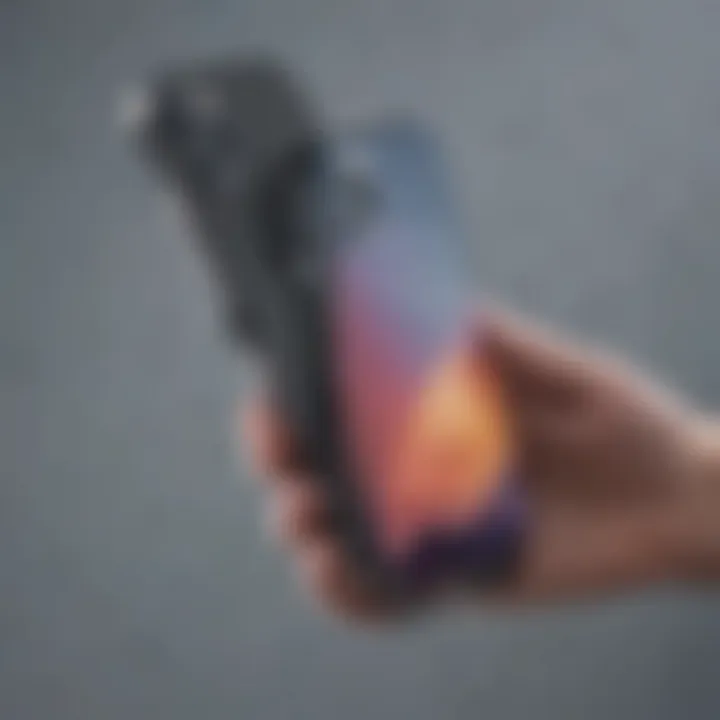
Product Overview
The iPhone 13 and iPhone 13 Pro are two of Apple's flagship mobile devices released in September 2021. Both devices showcase the evolution of Apple's technology, offering improved features and a refined user experience. A comprehensive understanding of these products is pivotal for anyone looking to upgrade or enter the Apple ecosystem.
Key Features and Specifications
iPhone
- Display: 6.1-inch Super Retina XDR
- Chip: A15 Bionic
- Camera: Dual 12MP system (wide and ultra-wide)
- Battery Life: Up to 19 hours of talk time
- Storage Options: 128GB, 256GB, 512GB
iPhone Pro
- Display: 6.1-inch Super Retina XDR with ProMotion (120Hz)
- Chip: A15 Bionic with enhanced GPU
- Camera: Triple 12MP system (wide, ultra-wide, and telephoto)
- Battery Life: Up to 22 hours of talk time
- Storage Options: 128GB, 256GB, 512GB, 1TB
Design and Aesthetics
In terms of design, the iPhone 13 and iPhone 13 Pro share many similarities, both featuring a glass front and back with an aluminum frame. However, the Pro model boasts a more premium finish with the addition of a stainless steel band. The color options also differ, with the Pro version offering exclusive hues like Sierra Blue and Graphite. Both models exhibit a sleek, modern appearance, but the Pro carries a more luxurious aesthetic.
Performance and User Experience
The performance of the A15 Bionic chip in both models is impressive. Benchmarks indicate that both devices outperform their predecessors significantly. The iPhone 13 handles everyday tasks with ease, while the iPhone 13 Pro excels in graphics-intensive applications, making it a better choice for gaming or content creation.
Performance Benchmarks
- iPhone 13:
- iPhone 13 Pro:
- Geekbench (Single-core): ~1730
- Geekbench (Multi-core): ~4600
- Geekbench (Single-core): ~1740
- Geekbench (Multi-core): ~4750
User Interface and Software Capabilities
Both devices run on iOS 15, providing a smooth and user-friendly experience. Features like Focus modes, redesigned notifications, and improved FaceTime functionalities enhance the overall usability. The iPhone 13 Pro unlocks additional features such as ProRAW and ProRes video recording, designed for advanced users and content creators.
User Experiences and Feedback
Users generally report satisfaction with both models. The iPhone 13 is praised for its efficient battery life and solid performance, while the iPhone 13 Pro receives accolades for its superior camera capabilities and ProMotion display.
"The iPhone 13 Pro feels like a device built for the future, while the iPhone 13 is a more than capable smartphone for the average user."
Comparison with Previous Models or Competitors
When compared to previous iPhones, both the iPhone 13 and iPhone 13 Pro showcase advancements in photography, processing power, and battery efficiency. They stand in contrast to the iPhone 12, especially in camera technology and display quality.
Advancements and Improvements
- Improved low-light camera performance
- Increased battery life
- Faster A15 chip compared to A14
Competitive Analysis with Other Similar Products
In terms of competition, devices like Samsung Galaxy S21 and Google Pixel 6 are often considered. The iPhone 13 series excels in software optimization and ecosystem integration, while competitors might offer superior camera flexibility or pricing.
Value Proposition
The value proposition of the iPhone 13 and iPhone 13 Pro lies in their robust build quality, user-centric design, and Apple's overall ecosystem. For those heavily invested in Apple services, these devices merit serious consideration.
Tips and Tricks
For those looking to optimize their experience with these devices, here are some practical tips:
- Adjust Display Settings: Enable ProMotion for smoother scrolling on the 13 Pro.
- Camera Features: Experiment with different shooting modes, such as Night Mode and Cinematic.
- Battery Management: Manage battery health through settings to maximize lifespan.
Latest Updates and News
Recent software updates have added features like Live Text and upgraded Focus modes, enhancing the overall iPhone experience. Customers can expect ongoing support from Apple, with regular updates improving functionality. Rumors about the next iPhone iteration suggest even more advanced camera systems and processing capabilities, keeping the anticipation high for tech enthusiasts.
Prologue to iPhone and iPhone Pro
In the landscape of smartphones, the introduction of the iPhone 13 and iPhone 13 Pro marks a pivotal advancement in Apple's product line. These models not only succeed the iPhone 12 series but also introduce new features and enhancements that appeal to various user demographics. Understanding the differences between them is essential for potential buyers, tech enthusiasts, and professionals in the industry.
The Apple iPhone 13 serves as a compelling choice for users who desire a reliable device with substantial performance and camera capabilities. It aims to cater to everyday users, providing a solid experience for tasks that range from social media browsing to photography, without overwhelming them with advanced features that they may not utilize.
On the other hand, the iPhone 13 Pro caters to a more discerning audience. This model is designed for those who seek the utmost performance, advanced photography features, and professional-level capabilities in a smartphone. Users who demand perfection in their devices often find themselves drawn to the extra capabilities that the Pro variant offers.
The two models are built on the same core technology, sharing fundamental specifications while diverging in specific features that justify the price difference. This inherent disparity between the two helps delineate their target markets.
Potential buyers must consider their usage habits and preferences when deciding between these two powerful devices. With enhanced capabilities in photography, performance, and build quality, each model provides distinct advantages, which can significantly impact user satisfaction and functionality in daily life. Understanding these distinctions allows consumers to make informed choices about which iPhone aligns best with their individual needs.
"Understanding the differences between the iPhone 13 and iPhone 13 Pro can help buyers make the right choice based on their specific needs and expectations."
The subsequent sections of this article will further explore the intricacies of both iPhone models to provide a comprehensive overview. From design elements to performance specs, every aspect will be analyzed, enabling readers to gain insights that are essential for choosing the right smartphone.
Design and Build Quality
The design and build quality of a smartphone are crucial factors influencing user experience and satisfaction. Both the iPhone 13 and iPhone 13 Pro emphasize aesthetics and functionality. When assessing these models, it is important to identify which design elements enhance usability and how they appeal to personal preferences. The materials used, dimensions, weight, and color options are significant considerations that can affect a buyer's choice.
Materials Used
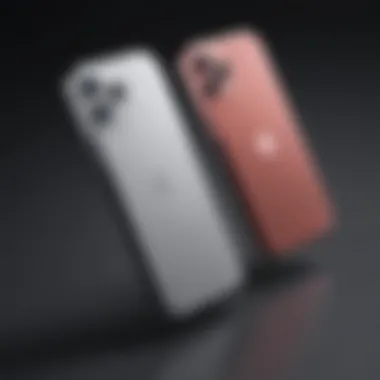
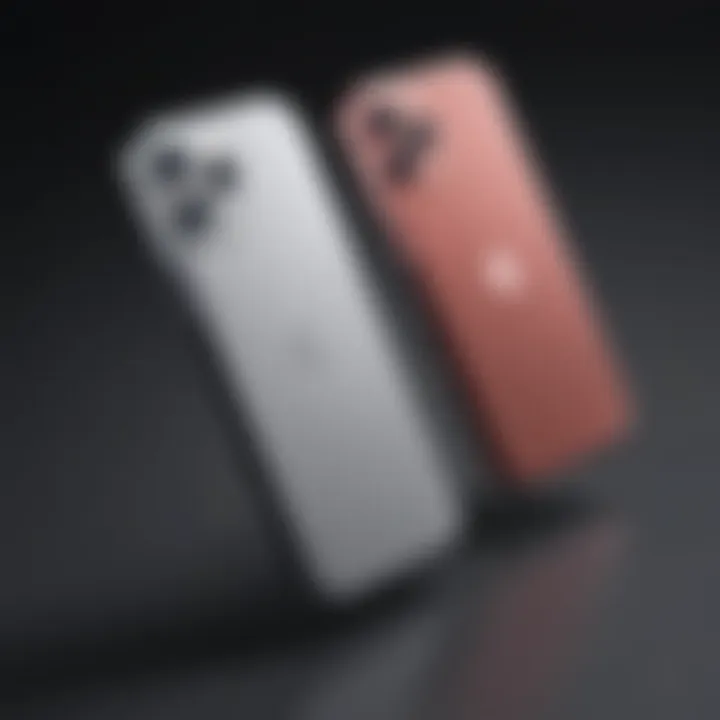
The materials selected for a smartphone can significantly impact its durability and overall feel. The iPhone 13 features an aluminum frame with a glass back, which provides a premium look and feel while being lightweight. The glass offers some degree of shatter resistance but can be vulnerable to damage with falls.
In contrast, the iPhone 13 Pro upgrades to a surgical-grade stainless steel frame. This choice not only enhances durability but also adds a touch of luxury. The back glass uses Ceramic Shield technology, which promises better drop performance compared to previous models.
The real difference here lies in perceptions of durability. While both devices look elegant, the added robustness of the Pro model may appeal to those prioritizing a resilient design.
Dimensions and Weight
When it comes to size, the iPhone 13 measures 146.7 x 71.5 x 7.65 mm and weighs about 174 grams. This makes it comfortable for one-handed use, appealing to a broad user base.
The iPhone 13 Pro is slightly heavier at 203 grams, measuring 146.7 x 71.5 x 7.65 mm. The difference in weight might not seem substantial, but it can affect how the phone feels during extended usage. Users may find the Pro model feels more substantial in hand, which can evoke a sense of premium quality or, conversely, concern about carrying it daily.
Color Options
Color choice can be more than mere aesthetics; it often reflects personal style and individuality. The iPhone 13 is available in several vibrant colors, including pink, blue, midnight, starlight, and red. These options provide broader appeal, particularly to younger audiences or those who prefer bolder expressions.
Meanwhile, the iPhone 13 Pro offers a more subdued palette of colors: graphite, gold, silver, and the new Sierra Blue. This selection targets customers looking for a more professional appearance. The more sophisticated colors combined with the premium materials help elevate the overall impression of the Pro model.
"A smartphone's design is not just about looks; it is about how it fits into the user's lifestyle and preferences."
Display Technology
Display technology is a cructial aspect when comparing the iPhone 13 and iPhone 13 Pro. The display influences not only visual clarity and color representation but also the overall user experience. A better display enhances the usability whether for enjoying multimedia, gaming, or day-to-day tasks. This section will dive into the differences in screen size, resolution, brightness, color accuracy, and refresh rate between the two models.
Screen Size and Resolution
The iPhone 13 features a 6.1-inch Super Retina XDR display with a resolution of 2532 x 1170 pixels. It offers vibrant colors and sharp text. On the other hand, the iPhone 13 Pro also has a 6.1-inch display, but its resolution is slightly higher, coming in at 2532 x 1170 pixels, just like the iPhone 13. The main difference lies in the addition of ProMotion technology in the iPhone 13 Pro, which adapts the refresh rate up to 120 Hz for smoother visuals.
Having a larger resolution helps when viewing high-definition content or editing photos. It ensures that each detail is not lost and maintains a high level of clarity.
Brightness and Color Accuracy
Brightness is another area where the two models show differences. The iPhone 13 has a typical brightness of 800 nits but can peak at 1200 nits for HDR content. The iPhone 13 Pro, however, offers a similar typical brightness of 800 nits, but also reaches peak brightness of 1000 nits for regular content and 1200 nits for HDR. This ensures that content remains visible in bright conditions, which is crucial for outdoor use.
Color accuracy is also improved in the iPhone 13 Pro, thanks to its superior hardware and software optimizations. The colors render more true-to-life, which is beneficial for photographers or anyone who relies on color representation.
Refresh Rate Comparison
The refresh rate is a significant difference between iPhone 13 and iPhone 13 Pro. The standard iPhone 13 features a refresh rate of 60 Hz, which is adequate for most tasks. However, the iPhone 13 Pro's ProMotion technology allows it to adjust the refresh rate between 10 Hz up to 120 Hz. This dynamic adjustment makes scrolling smoother, reduces input lag in gaming, and improves overall responsiveness.
The higher refresh rate on the iPhone 13 Pro results in a noticeably smoother experience during gaming and scrolling, making it more appealing to tech enthusiasts seeking top performance.
Performance Overview
The performance of a smartphone is pivotal to its overall user experience. In the case of the iPhone 13 and iPhone 13 Pro, understanding their performance capabilities helps consumers discern which model meets their needs best. The performance overview will cover the heart of each device—the processor—and how this influences everyday use. Additionally, we will look at RAM and storage options, critical for multitasking and general phone usage. Finally, real-world testing will provide insights on the practical performance differences that users may encounter in daily scenarios.
Processor Specifications
The iPhone 13 and iPhone 13 Pro are powered by Apple’s A15 Bionic chip, which is designed to deliver exceptional performance. The A15 chip is a six core processor with two high-performance cores and four efficiency cores, allowing for a balance of speed and energy consumption. The iPhone 13 Pro features a GPU with five cores, compared to the four-core GPU found in the standard iPhone 13. This additional core enhances graphics performance, making the Pro model more suited for demanding applications such as gaming or graphic design.
Key points to consider about the processors include:
- Speed: Both models boot apps quickly, but the Pro leverages additional GPU power.
- Efficiency: The A15 is more power-efficient than previous models, extending battery life.
- Machine Learning: Both devices utilize Apple’s Neural Engine, enabling advanced machine learning tasks.
RAM and Storage Options
The iPhone 13 comes with 4GB of RAM, while the iPhone 13 Pro is equipped with 6GB. This distinction can influence multitasking capabilities. Having more RAM allows the Pro to handle more applications running simultaneously without sacrificing performance.
Storage options also vary between the two models. The iPhone 13 offers 128GB, 256GB, and 512GB variants. On the other hand, the iPhone 13 Pro provides an additional tier of storage, with a 1TB option available. Users who store large quantities of photos or videos may find this beneficial.
Real-World Performance Testing
When assessing performance, theoretical benchmarks may not fully reflect user experience. Real-world performance testing evaluates how the devices operate during everyday tasks. Scenarios include multitasking with multiple applications, gaming, and demanding processes like video editing.
In testing scenarios, users have noted that:
- App Launch Times: Both models exhibit minimal differences in loading times, but the Pro may handle heavier applications slightly quicker due to its additional GPU core.
- Multitasking: The Pro model shows improved performance in multitasking scenarios, switching seamlessly between open apps without lag.
- Gaming Performance: For users engaging in mobile gaming, the advanced GPU in the iPhone 13 Pro results in smoother graphics and higher frame rates.
Understanding performance metrics helps potential buyers choose the right device for their specific needs and use cases.
Camera Capabilities
The camera capabilities of a smartphone have become one of the most critical factors for buyers. For many, the ability to capture high-quality images and videos is paramount. In the case of the iPhone 13 and iPhone 13 Pro, Apple has placed considerable emphasis on enhancing their camera systems. These improvements not only cater to photography enthusiasts but also appeal to everyday users who want reliable, top-notch performance. In this section, we will explore various aspects of the camera systems, highlighting both models' specifications and capabilities.
Rear Camera Specifications
The rear camera systems of the iPhone 13 and iPhone 13 Pro differ in terms of lens configuration and features. Both devices utilize a dual-camera setup in the iPhone 13, consisting of a 12MP ultra-wide lens and a 12MP wide lens. This arrangement allows users to capture stunning landscapes and detailed portraits alike. The iPhone 13 Pro, on the other hand, boasts a triple-camera configuration, adding a 12MP telephoto lens to the mix. This telephoto lens allows for optical zoom capabilities, enabling users to get closer to distant subjects without sacrificing image quality.
In terms of low-light performance, both devices benefit from Night Mode, which is enhanced on the Pro model, offering better results in challenging lighting conditions. The Photographic Styles feature available on both devices lets users customize their photography preferences, making it easier to achieve a consistent look across images.
Front Camera Features
On the front, both models come equipped with a 12MP TrueDepth camera. This camera system is significant as it enables features such as Portrait Mode, Night Mode, and Deep Fusion. The iPhone 13 Pro also introduces ProRAW and ProRes video recording capabilities, providing users with professional-grade editing options for their selfies and video calls. This versatility is especially appealing to content creators and vloggers who seek pixel-perfect quality.
Additionally, the front camera supports 4K Dolby Vision HDR recording, which enhances the quality of videos taken in diverse environments, making it a powerful tool for anyone who places a premium on video quality when it comes to selfies.
Camera Software and Modes
The software enhancements in the camera application have a profound impact on user experience. Both the iPhone 13 and iPhone 13 Pro feature various modes and effects that can elevate a standard photograph to something extraordinary. The Smart HDR feature automatically adjusts the exposure, contrast, and color balance, producing remarkable images with rich detail.
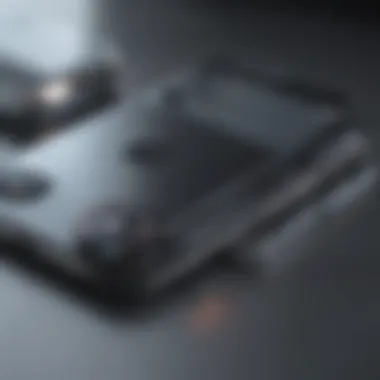

The iPhone 13 Pro takes further strides by incorporating advanced computational photography techniques, such as Photographic Styles and improved Night Mode. Users can also access features like Cinematic Mode, which allows for shallow depth of field and automatic focus transitions between subjects. This cinematic feature is appealing to filmmakers and content creators who aim to provide a theatrical feel to their projects.
"With innovative software features and high-quality hardware, both the iPhone 13 and iPhone 13 Pro redefine mobile photography in their respective categories."
Battery Performance
Battery performance is a vital aspect of any smartphone discussion, especially when contrasting two models like the iPhone 13 and iPhone 13 Pro. The ability of a phone to sustain usage throughout the day can significantly influence user experience and satisfaction. Each model's battery performance can shape not only the everyday interactions but also the longevity of the device over its useful life. This section examines the specifications, usage times, and charging capabilities of these two devices, shedding light on how they meet the needs of discerning users.
Battery Specifications
The iPhone 13 and iPhone 13 Pro both boast impressive battery specifications that reflect Apple's commitment to enhancing user experience. The iPhone 13 features a battery capacity of 3,240 mAh, while the iPhone 13 Pro comes with a slightly higher capacity of 3,125 mAh. Despite the differences in capacity, Apple has optimized the energy efficiency of these models through various software and hardware improvements. The efficiency granted by the A15 Bionic chip plays a crucial role here. This ensures that both models can deliver a commendable performance without the need for excessive energy consumption.
Usage Time Analysis
When considering usage times, real-world tests reveal interesting distinctions between the iPhone 13 and iPhone 13 Pro. Apple's official claims suggest that the iPhone 13 provides up to 19 hours of talk time, while the iPhone 13 Pro offers up to 22 hours. These figures can vary depending on user habits and settings. As users increasingly rely on various applications, video playback, and gaming, the longevity of the battery becomes critical. The iPhone 13 is an excellent choice for users who engage in typical daily activities, while the Pro version may appeal more to power users.
"Battery life is essential. It connects with how we use our devices daily, impacting everything from convenience to functionality."
Charging Options
Both the iPhone 13 and the iPhone 13 Pro support a range of charging options that enhance convenience for users. Both models are compatible with MagSafe technology, enabling a magnetic connection for easier wireless charging. Furthermore, these devices support 20W wired fast charging, allowing users to refuel their batteries quickly when in a hurry. The flexibility of charging methods—wireless, wired, and MagSafe—demonstrates Apple's attention to the nuanced needs of modern smartphone users.
Software Features
The software features of the iPhone 13 and iPhone 13 Pro play a crucial role in the overall user experience. Both models run on Apple's iOS, which is known for its stability, security, and user-friendly interface. Understanding the specific elements, advantages, and shortcomings of the software across both devices helps consumers make informed choices.
iOS Version and Updates
The iPhone 13 and iPhone 13 Pro come preloaded with iOS 15, featuring a variety of enhancements aimed at improving usability and performance. Apple consistently provides updates for its devices, ensuring users receive the latest features and security patches. Regular updates enhance the device's longevity and are crucial for maintaining performance standards.
Some of the key software features introduced with iOS 15 include:
- Focus Mode: Allows users to customize notifications and focus on what matters most. This is very useful for maintaining productivity.
- FaceTime Enhancements: Improved audio and Video quality. Users can also share screens during calls.
- Live Text: A new feature that pulls text from photos, allowing users to copy and paste text from images.
Overall, iOS 15 elevates the experience for both models, but users of the iPhone 13 Pro may enjoy more advanced functionalities also tied into its hardware capabilities.
Exclusive Features of iPhone Pro
The iPhone 13 Pro boasts certain exclusive software features that take full advantage of its hardware advancements. These features amplify the overall experience, particularly for enthusiasts and professionals who prioritize performance and aesthetics.
Some distinctive features include:
- ProMotion Display: With a 120Hz refresh rate, iPhone 13 Pro offers smoother scrolling, more responsive touch, and better gaming experiences.
- Cinematic Mode: This feature enables users to shoot videos with a shallow depth of field and automatic focus transitions. This makes video production far more professional compared to the standard iPhone 13.
These software enhancements on the iPhone 13 Pro cater to a niche audience that values high-performance specifications and advanced features in multimedia content creation.
User Experience and Interface
Both the iPhone 13 and iPhone 13 Pro benefit from Apple's intuitive interface design, which ensures a seamless user experience. The layout, gesture controls, and app organization allow users to navigate effortlessly without much learning curve.
The experience largely relies on the user’s familiarity with iOS, and both models give similar usability. Key features include:
- Customizability: Users can rearrange apps, create folders, and utilize widgets to personalize their experiences.
- App Compatibility: Both devices support a wide array of apps available on the App Store, ensuring that users can access necessary tools for work or leisure.
However, some users might find that specific features exclusive to iPhone 13 Pro, such as improved photo editing tools or additional configurations in camera apps, elevate the overall experience of this model.
Connectivity and Networking
Connectivity and networking are pivotal in today's smartphone landscape. For the iPhone 13 and iPhone 13 Pro, these elements not only enhance user experience but also affect overall device functionality, data speed, and accessibility. Seamless connectivity allows users to engage with various services and features, from high-speed internet to smart home integration.
Both models incorporate cutting-edge technology to ensure they meet the demands of modern users. As more people rely on their devices for work, communication, and entertainment, connectivity becomes a crucial factor in determining the suitability of each device for potential buyers.
5G Support
The iPhone 13 and iPhone 13 Pro include robust support for 5G networks. With the advent of 5G, users can experience significantly faster download and upload speeds, lower latency, and improved overall performance during network congestion. 5G support means that users can stream high-definition content, participate in video calls, and download large files quickly and effortlessly.
Both models feature support for both sub-6 GHz and mmWave 5G technologies, which provides flexibility based on available network infrastructure. This adaptability is crucial as 5G networks continue to expand.
- High Speeds: Users can expect up to 3.5 Gbps on supported networks in optimal conditions.
- Enhanced Connectivity: With 5G, connectivity remains stable even in crowded areas, making it beneficial for urban environments.
- Future-Proofing: Investing in 5G support ensures users are ready for evolving network capabilities, which may further enhance speeds and connections in the coming years.
Wi-Fi and Bluetooth Features
In addition to 5G, the iPhone 13 and iPhone 13 Pro come equipped with advanced Wi-Fi and Bluetooth functionalities. Wi-Fi 6 is supported, which introduces improved performance in environments with many connected devices. This benefit is particularly noticeable in homes and public places that may have several users connected simultaneously.
Key aspects of Wi-Fi and Bluetooth features include:
- Wi-Fi 6 capabilities: This standard allows for better performance, even at longer ranges, and is designed to enhance battery life through efficient data exchange.
- Bluetooth 5.0: The latest Bluetooth technology enables faster pairing and larger range, allowing for improved connectivity with accessories like AirPods or smartwatches.
- AirPlay Compatibility: Both models support AirPlay, enabling users to stream audio and video wirelessly to compatible devices effortlessly.
Overall, the combination of 5G, enhanced Wi-Fi capabilities, and Bluetooth technologies ensures that the iPhone 13 and iPhone 13 Pro provide a seamless and efficient connectivity experience.
Pricing and Value Proposition
Pricing and value proposition are critical elements when evaluating technology products like the iPhone 13 and iPhone 13 Pro. Understanding how these factors influence consumer choice can guide potential buyers in making informed decisions. The price tag is not just a number; it reflects the features, capabilities, and overall perception of the device in the market. Buyers often weigh the initial cost against the expected benefits and long-term value. This section will delve into the specifics of base model pricing and the costs associated with possible upgrades for both devices.
Base Model Pricing
The base model pricing of the iPhone 13 and iPhone 13 Pro showcases their positioning within Apple's lineup. The iPhone 13 is typically priced lower, making it more accessible to a broader audience. In contrast, the iPhone 13 Pro carries a higher starting price due to its premium features like enhanced camera capabilities and superior display technology.
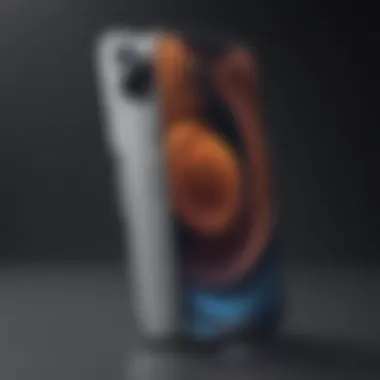
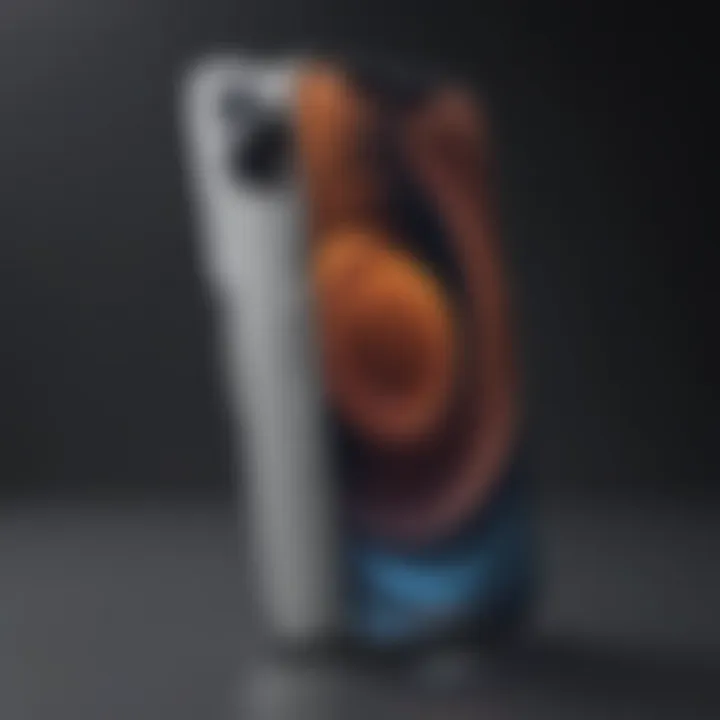
The recommended retail prices at launch were around $799 for the iPhone 13 and $999 for the iPhone 13 Pro. It is essential to keep in mind that these prices can fluctuate over time due to market dynamics and promotional strategies employed by Apple. This initial price difference initiates a conversation about value. What does each dollar spent provide in terms of functionality and performance? The iPhone 13 appeals to users who desire a solid iPhone experience without the highest-end features, while the iPhone 13 Pro fits users seeking advanced functionalities, such as professional-grade photography and gaming capabilities.
Cost of Upgrades
As with any technology, consumers often consider the cost of upgrades which can significantly affect the total investment they are making. Upgrades in iPhone models usually include better storage options, accessories, and extended warranties. For the iPhone 13, customers can choose from various storage tiers, starting from 128GB to 512GB, which affects the price accordingly. Similarly, the iPhone 13 Pro offers a more extensive range of storage up to 1TB, catering to a more demanding user base who generate substantial data.
The additional cost for higher storage options can be a crucial consideration for customers. Owners of the iPhone 13 Pro can expect to pay significantly more for the 1TB model compared to the base storage option, while even the iPhone 13 sees price hikes with larger storage configurations. Beyond internal storage, there may be costs for accessories like cases, wireless chargers, and screen protectors.
Target Audience and Market Position
Understanding the target audience and market position for the iPhone 13 and iPhone 13 Pro is crucial in determining the context and relevance of these models. Apple aims to cater to diverse user needs, and knowing who these devices best serve helps potential buyers make informed choices. This section will elaborate on which demographic segments are most likely to appreciate the features and capabilities of each model, as well as the broader market implications of their distinctions.
Ideal Buyers for iPhone
The iPhone 13 primarily appeals to a broad audience that values a well-rounded smartphone experience without the premium features that come with the Pro model. Typical buyers include:
- General Users: Individuals looking for a reliable device for everyday tasks such as messaging, social media, and standard photography.
- Budget-Conscious Consumers: Those who desire the latest technology but are unwilling to pay a premium for advanced functionalities. The iPhone 13 provides excellent value, offering many capabilities at a lower price point compared to the Pro.
- Students and Young Adults: Tech-savvy individuals who want an efficient phone for communication and multimedia consumption but do not require the high-end specifications of the Pro version.
The iPhone 13 offers sufficient performance for day-to-day activities and casual photography, alongside its competitive battery life. These qualities make it an attractive option for those who prioritize functionality without extra bells and whistles.
Ideal Buyers for iPhone Pro
Conversely, the iPhone 13 Pro is designed for users who demand more from their devices. Ideal buyers include:
- Professionals and Creatives: Individuals in fields like photography, video production, and graphic design, where camera capabilities and processing power matter significantly. Features like ProRAW and ProRes video recording cater directly to this group.
- Tech Enthusiasts: Users who are passionate about the latest technology and seek out cutting-edge features. They are likely to appreciate the enhanced display and superior hardware.
- Gamers: Individuals who expect high performance and smooth graphics when gaming. The iPhone 13 Pro's superior GPU and ProMotion technology support this demand better than the standard iPhone 13.
The iPhone 13 Pro appeals to those who wish to leverage the full potential of a smartphone's capabilities. It offers a considerable upgrade in camera technology, display quality, and specifications, making it versatile for advanced usage scenarios.
The distinction in target audiences highlights Apple's strategy to serve varying levels of consumer need, ensuring that both models find their rightful place in a diverse market.
User Reviews and Feedback
User reviews and feedback play a crucial role in shaping a potential buyer's perception of any product, and the iPhone 13 and iPhone 13 Pro are no exceptions. Consumer experiences often highlight real-world usage beyond what technical specifications can convey. By examining user opinions, one can gauge the practical impacts of device choices and note the strengths and weaknesses that perhaps the marketing narrative does not emphasize.
Feedback gives insights into customer satisfaction, longevity of performance, and actual usability in day-to-day life. Thus, considering user reviews provides a broader understanding of how these devices perform consistently under various conditions.
Common Praises
Many users have voiced their appreciation for the iPhone 13's superior battery life and camera capabilities. Users frequently mention that the iPhone 13’s battery easily lasts a full day with moderate use. This reliable power has won over numerous customers who prioritize longevity. Similarly, the camera performance has been highlighted positively, with users enjoying the vibrant photo quality and improved low-light capabilities.
Other common praises include:
- Build Quality: Users admire the premium feel of both models, noting how the materials feel durable yet sleek.
- User-Friendly Interface: Apple’s iOS remains a favorite among many for its intuitive design and ease of navigation.
- 5G Connectivity: The faster internet speeds offered by 5G networks have impressed users, especially those in urban areas where coverage is prevalent.
- Performance: Powered by the A15 Bionic chip, users regard both the iPhone 13 and 13 Pro as fast and efficient.
Overall, the responses reflect a general satisfaction with the enhancement of user experience from previous models.
Frequent Criticisms
Despite the praises, reviews also surface issues and criticisms that potential buyers must contemplate. Commonly, users have expressed concerns over the price point of the iPhone 13 Pro, considering it quite elevated compared to the standard iPhone 13. Many find it difficult to justify the additional cost, particularly if they do not fully utilize the Pro features.
Other frequent criticisms include:
- Weight: Some users mention that the Pro model feels heavier in hand, which could lead to discomfort during prolonged use.
- Limited Storage Options: The base storage capacity is seen as inadequate by some users, particularly given the high-quality photos taken with the camera.
- Camera Size: The camera bump on the iPhone 13 Pro has drawn criticism for making the device uneven when placed on flat surfaces.
- Software Bugs: Some reviewers indicate experiencing occasional software glitches, especially right after updates.
In summary, while positive feedback outweighs the negative, being aware of the criticisms ensures informed decision-making when selecting between the iPhone 13 and iPhone 13 Pro.
Comparative Summary
The comparative summary serves as a critical section within this article as it synthesizes the information presented throughout. It aims to crystallize the essential differences and overlapping features of the iPhone 13 and iPhone 13 Pro. This analysis assists readers in making informed decisions based on highlighted specifications and user experiences. By paying attention to this summary, Apple enthusiasts and tech buyers can weigh the value of each model in terms of their personal or professional needs. This section is especially valuable for those who must digest a substantial amount of information quickly, as it encapsulates the core points discussed earlier.
Key Differences Recap
The differences between iPhone 13 and iPhone 13 Pro can influence purchasing decisions significantly. Here are the main distinctions:
- Camera Systems: While both models have impressive rear cameras, the iPhone 13 Pro includes additional features like the telephoto lens and ProRAW capabilities, which can appeal to photography enthusiasts.
- Display Technology: The iPhone 13 Pro features a ProMotion display with a 120Hz refresh rate. This enhances its responsiveness and overall fluidity during use, unlike the iPhone 13 which has a standard 60Hz display.
- Material and Design: The iPhone 13 Pro offers a stainless steel frame compared to the aluminum of the iPhone 13. This gives the Pro model a more premium feel and added durability but also makes it slightly heavier.
- Battery Life: Battery performance differs slightly due to the Pro model's additional features. The iPhone 13 may offer longer battery life for everyday tasks, while the Pro can consume more power during intensive usage like gaming or video editing.
"Understanding these key differences allows consumers to choose a device that aligns better with their usage patterns and expectations."
Similarities Overview
Despite their differences, iPhone 13 and iPhone 13 Pro share commonalities that could make them equally appealing in different contexts. Notable similarities include:
- Processor: Both models are powered by the same A15 Bionic chip, ensuring exceptional performance and efficiency for everyday tasks, gaming, and AR applications.
- Software: Running on iOS, both models are compatible with the same apps and receive regular updates, maintaining a seamless user experience and security enhancements.
- Retail Price: Pricing strategies place both devices within reasonable ranges for their respective target audiences, though the iPhone 13 Pro does demand a higher investment.
- 5G Capability: Enhanced networking features in both models allow users to access faster internet speeds over 5G networks, making them future-proof for connectivity.
Final Recommendations
In any product comparison, the Final Recommendations section plays a crucial role. It distills the findings of the entire analysis into actionable advice. For potential buyers, understanding when to select each model can significantly influence their satisfaction with the purchase. This decision is shaped by individual needs, lifestyle choices, and budget considerations. Furthermore, clarifying these points helps consolidate the features and qualities that differentiate iPhone 13 from iPhone 13 Pro.
When to Choose iPhone
Selecting the iPhone 13 can be ideal for users who prioritize practicality over premium features. For most daily tasks, its capabilities are more than sufficient. Here are some reasons to choose iPhone 13:
- Affordability: Generally, it comes at a lower price compared to the Pro variant while offering similar core functionalities.
- Solid Performance: The A15 Bionic chip ensures a smooth user experience through applications and everyday tasks.
- Camera Essentials: The dual-camera system is still robust for casual photography.
- Sufficient Display Quality: The Super Retina XDR display provides vibrant visuals without the necessity for additional features like ProMotion technology.
These reasons make the iPhone 13 a sensible choice for those who want a capable smartphone without the extra costs associated with high-end specifications and features.
When to Opt for iPhone Pro
Choosing the iPhone 13 Pro makes sense for those who want advanced technology and features that can enhance their mobile experience. Here are key points to consider when deciding:
- Enhanced Camera Capabilities: The Pro model offers a triple-camera system. Photography enthusiasts will benefit from advanced features like ProRAW and ProRes video recording.
- ProMotion Display: With a refresh rate of up to 120hz, the smoother scrolling experience stands out. Techniques such as gaming or video editing are notably more enjoyable.
- Impressive Build Quality: Made from premium materials and available in unique finishes, the Pro feels more luxurious in hand.
- Increased Storage Options: Ideal for users with extensive app libraries, photos, or videos. Higher storage configurations provide more room for multimedia content.
Thus, the iPhone 13 Pro appeals to individuals who seek performance, aesthetics, and advanced features, willing to invest more for these attributes.
Understanding the differences in usage scenarios is essential to make an informed choice. Evaluate what features matter most to you, considering your lifestyle and usage patterns.



